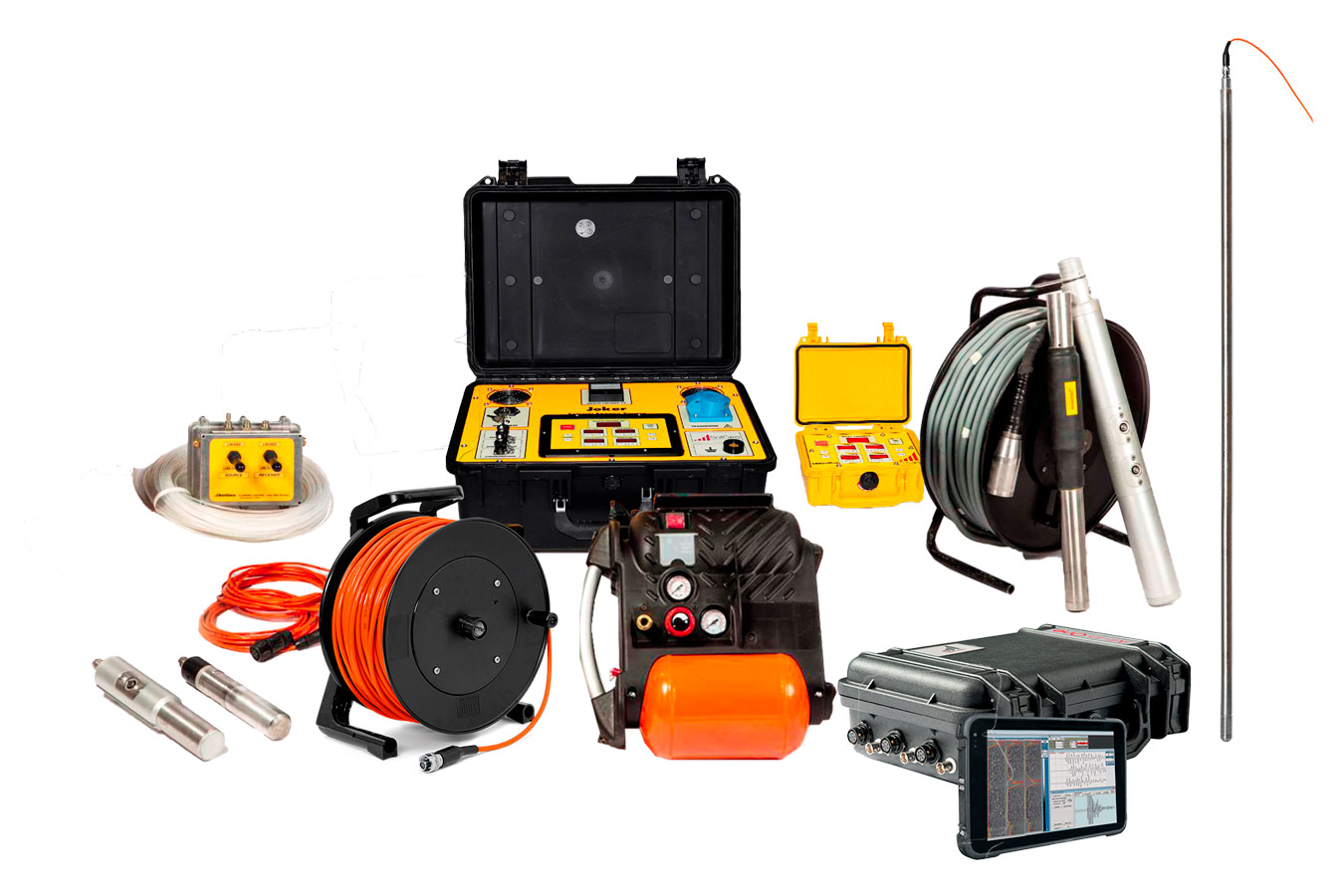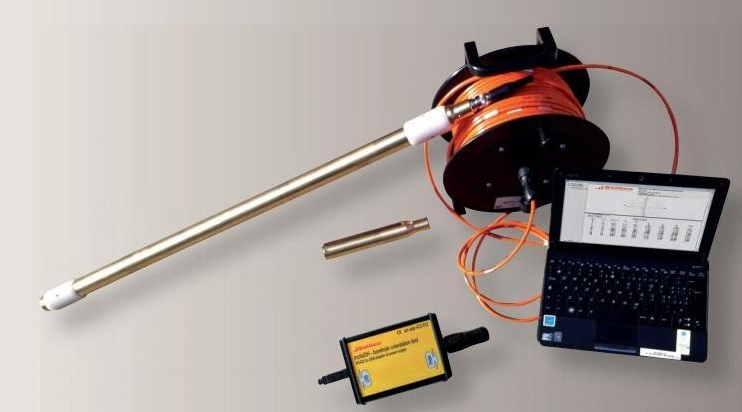
The CROSS HOLE SEISMIC SYSTEM is the system for borehole surveys specifically designed for a thorough geophysical investigation of the subsurface and for the measurement of seismic waves of compression and shear specifically designed for the seismic survey of concrete dams, soil materials and embankments.
APPLICATIONS
- Seismic cross-hole (2 or 3 bore holes)
- Seismic down-hole
- Seismic tomography
- Estimation of ground elastic moduli
- Cavities / faults detection
- Seepages detection
STANDARDS: ASTM D4428/ D4428M

Cross hole seismic system
FEATURES:
Cross-Hole test consists in the direct measurements of horizontally travelling compression (P) and shear (Sv) seismic waves at test sites (i.e soil materials, concrete dams, embankments, etc) in order to get Elastic modules and local site characteristics.
Two specific borehole seismic sources are used to generate a seismic wave train. One or more receivers are used to detect the arrival of the seismic wave train in offset borings; the distance between boreholes at the test depths is measured using a borehole deviation survey (Inclis DH). Wave velocity is calculated from the measured distance and travel time for the respective wave train.

Borehole inclinometer
The new inclinometer probe INCLIS DH, designed by SolGeo, allows to perform a 3D borehole deviation survey, it is equipped with 3 magnetometric and 3 accelerometric sensors.
INCLIS DH at the surface is linked with an USB control box which provides both power supply and real data transfer to the PC, Elboration software SOLCLINO allows an instantaneous delivery of results acquired along borehole, showing its altimetric and planimetric trend.
SOLGEO SPARKER TM is an automatic source used to generate P waves; it works at many different levels of power (from 100J to 500J) ensuring frequency contents from 100 Hz up to 6kHz; it must be used in boreholes filled with water.
SOLGEO GEOSvTM is used to generate S waves. The energy source is composed of two parts: a central section that contains the pneumatic clamping tools and second part that contains the electrodynamics waves generator. The device allows it to automatically produce both upwards and downwards signals, in order to obtain an inversion of the shear waves polarization without P waves noise.
The Solgeo vertical geophone receiver, AVG (Amplified Vertical Geophone), contains a vertical sensor with an electronics preamplifier. The clamping to the borehole casing is obtained with a pneumatic device allowing surveys in boreholes up to 200 m of depth.